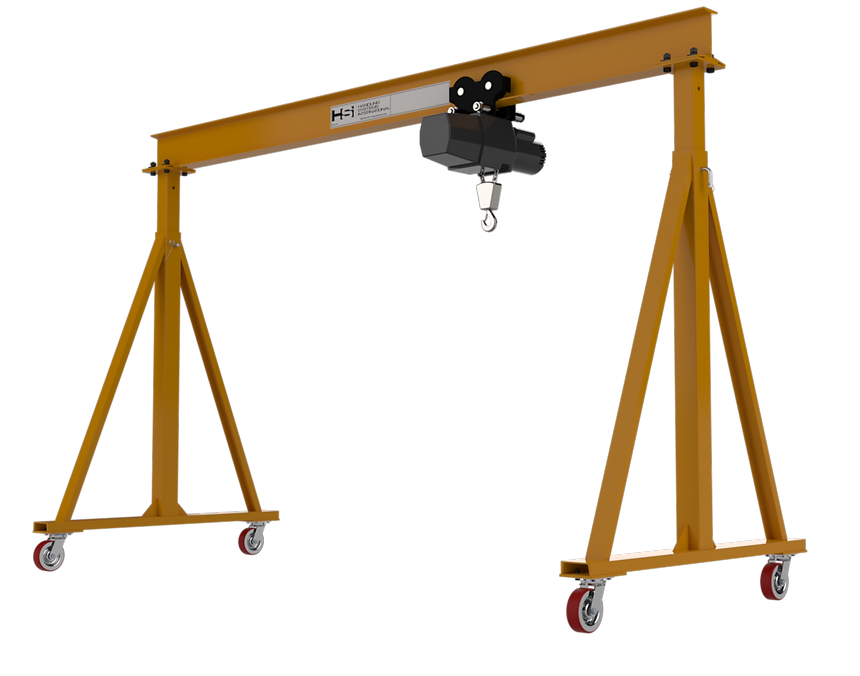Definitions
Crane Terms
Large steel bolts used to mount a base mounted pillar jib crane to the H.S.I. recommended foundation.
The horizontal beam on which the hoist trolley travels.
The maximum live weight that the crane is designed to support.
The measurement between the end stops on a crane boom.
Bolted to each end of the boom to prevent the trolley from falling off of the beam.
The distance, centerline to centerline, between two support brackets (fittings) of a wall mounted jib crane.
For free standing pillar base mounted jibs. Foundations are used to support the jib and prevent it from tipping over.
Reinforcing plates used to stiffen mast at the base plate.
The actual lifting mechanism (powered by electric, air, or manual movement) that hangs from the trolley that rides on the boom of a jib crane.
Houses the roller, and lowers the crushing forces that are imposed on the mast.
The distance from the finished floor to the underside of the crane boom. To find the under- boom, take the height of the load, plus the distance the load is lifted, plus the headroom requirements of the hoist/trolley and any attachments. Extra room aside from mandatory room needed could be helpful.
The vertical member of the jib, which supports the crane. Pillar jibs have round pipes as masts.
The highest point of the jib crane (including any hardware). A minimum clearance (usually 3”) is required from any overhead obstruction.
The overturning moment is the force applied to the mounting structure of a self-supporting pillar jib. This load is created by suspending a load from the boom, and is greatest at full load, at the very end of the boom.
Limits the rotation of a pillar base mounted jib crane boom (which are standard at 360°). Stops are field welded to the mast.
The span for a pillar base mounted jib crane is the distance from the center of the mast to the end of the boom. The span for a column mounted crane is measured from the face of the mounting surface to the end of the boom. The span for a mast type jib crane is measured from the center of the vertical mast to the end of the boom.
Thrust and Pull are forces applied to a wall/column mounted jib cranes support structure. Thrust is the pushing force exerted on the structure, and pull is the tensile, or pulling force. Thrust and Pull are equal to each other (but opposite in direction), and are given for maximum at full load at the end of the boom.
The mechanism that travels back and forth on the crane boom (powered by electric, air, or manual movement) which the hoist hangs from.
Join Our Newsletter
Subscribe to stay up to date

